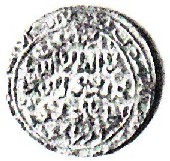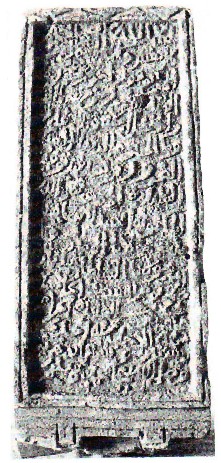To next page
Muhammad b. Sa'id al-Qalhati: rhymed prose called al-Maqama al-Kilwiyya in : The Kilwa Sira (1200) from Oman.
------------------------------------------------
Taken from: J.C. Wilkinson: African Historical Studies 1981
The Kilwa Sira consists of two documents of which this one is the second. The first one dates from 1116.
It commemorates how the Ibadis of Oman had successfully send one of their members to help their Kilwa brethren. The author himself was involved in these events. His story would have been completely incomprehensible without a written note accompanying from about a century later by Ibn al-Nazar, a scholarly family closely associated with al-Qalhati.
The background of the poem as far as the commentator had been able to discover, was as follows:
The people of Kilwa were Ibadis and had agreed to choose their leader from the descent of (Awlad) Sulayman b. Walid b. Sulayman b. Yarik/ Barik al-Naysaburi. With the dead of Walid b. Sulayman they had chosen his son Yarik/ Barik, to look after their affairs (wasiyya), bypassing in the process Yarik's brother, Mughira. The latter thereupon adopted the rival creed of a man called Abu Aliyan who had come from southern Iraq and had been successfully converting the masses. So Yarik send to the people of (interior) Oman for help. Upon receipt of this letter they decided to send Abu Abdullah Muhammad b. Umar al-Bashri al-Manhi, the youngest but wisest of them (then follows in a list who these contemporaries were, which allows us to date him approximately) who went to report to Muhammad b. Sa'id al-Qalhati at his home town, the port of Qalhat ( in southern Oman). The latter arranged his passage when the ships left for Bilad Zanj, which is Kilwa. Upon his arrival Muhammad al-Bashri was successful in reconverting one of the apostates and with his help formed a small band of missionaries who gradually brought the people back to Ibadism; Mughira himself however remained obdurate. When the Omani missionary returned to Oman he told al-Qalhati of his success, and the latter decided to publish it through his Maqama. This takes the form of an exchange between the apostate, the qawl al-fasiq, and an exposition by the Ibadi missionary of the true faith, the jawab, which reconverts him.
The apostate's expose with which the actual Maqama starts, allows us to expand in places the commentator's resume of events. This is what Muhammad al-Bashri finds the Kilwa renegades saying:
We are the progeny (sulala) of al-Qadi al-walid b. Sulayman. (the apostate) have left the madhhab (doctrinal school) of al-Walid and taken on the new madhhab: I have deposed the madhhab of Abdullah Ibn Ibad (that is the attributed eponym of the Ibadis) and follow the madhhab of those who (permit) intercourse during menstruation and the period of childbirth, the madhhab of high living (madhhab al-la'b wa'l-raqs wa'l-irtikad): I believe all the extremist sects such as Sufis, Jawaliqa, Dahriyya and Zanadiqa..... This new religion is named after Abu 'Aliyan and I have studied it two years. We relate that in his imama there are two (contradictory) exposes (qawl) in everything.
The apostate then goes on to say how it permits licentious behavior, homosexuality, intercourse during Ramadan, and so on. Among the more specific information which comes out of this declaration is that this religion has come from southern Iraq (specifically Kufa, al-Hilla, al-Zikiyya(?), Sawad, and Basra, from Obulla to beyond Abadan), where it has a great following, as it does in Baghdad. The proponent of the basic idea is named as Sabi'a b. Abi Talib (Abdullah b. Saba?? of the twelver Shi'i school)


